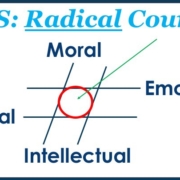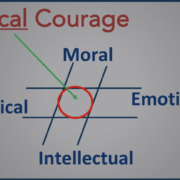You cannot afford to waste a single brain when it comes to your company’s success.
What would happen if all your employees were engaged and committed to your company’s success?
What would change if two-thirds or more of your employees were committed to your company’s success?
Many leaders rely on a few all-stars, hoping the rest can pull some of the load. According to Gallup, barely one out of every three employees reports being engaged at work. With one-third or fewer pulling the load, you are burning the candle at both ends.
I met someone this morning at a global affairs conference in Washington, DC, who shared her story of burnout and walkout. Her employer was content to waste the talents of the unengaged and ride the workhorses until they broke.
No leader intends to waste the brains and talents of their employees, but most don’t know how to move them from unengaged to engaged without micromanagement. Who has the time for that?
What if you could get more people pulling the load? Your all-stars would still be in their zones of genius, stay with you longer, and contribute better, because the unengaged are pulling on the oars in the right direction and cadence.
Everyone has unique gifts– natural strengths or superpowers – that too often get overlooked in the hunt to hire people with the right skills.
You need to put people in roles where they use their natural talents and exploit them with their skills.
When you put people in roles that don’t engage their natural talents or skills, they will fail and drop out.
A more common occurrence is putting people in roles that match their skills but not their natural talents. It’s like putting a big-ideas person into a role that requires them to pore over Excel spreadsheet details. High-functioning big-ideas people will perform the job well but burn more energy than a details person will. This problem is what happened to the person I met in DC.
The upper left quadrant occurs when someone is in a role matching their talents, but they do not yet have the skills to exploit them. Steve Jobs, for example, was in this quadrant during his first stint at Apple. His people skills were so terrible that he got fired from the company he founded.
Jobs grew from the experience and developed enough people skills to avoid being radioactive. He moved into this zone of genius.
How can you help people find their zone of genius? I’ve created the PROM Archetypes® quiz to give you a broad frame. PROM stands for the four types of people you find in the workplace: Pioneers, Reconcilers, Operators, and Mavericks. They each make distinct contributions when in their zones of genius.
Once you have their PROM Archetype® and identify their zone of genius, you can more precisely define the skills they need to exploit them. You can also use this tool to check your company’s cognitive diversity.
When you know people’s natural talents and skills, you can put them in zone-of-genius roles where they will thrive.
There’s no reason to waste people’s talents.
Would you like to discuss ways to use the PROM Archetypes® to strengthen your company and help everyone get good at getting better? Schedule a call. There’s no cost, obligation, or BS.










